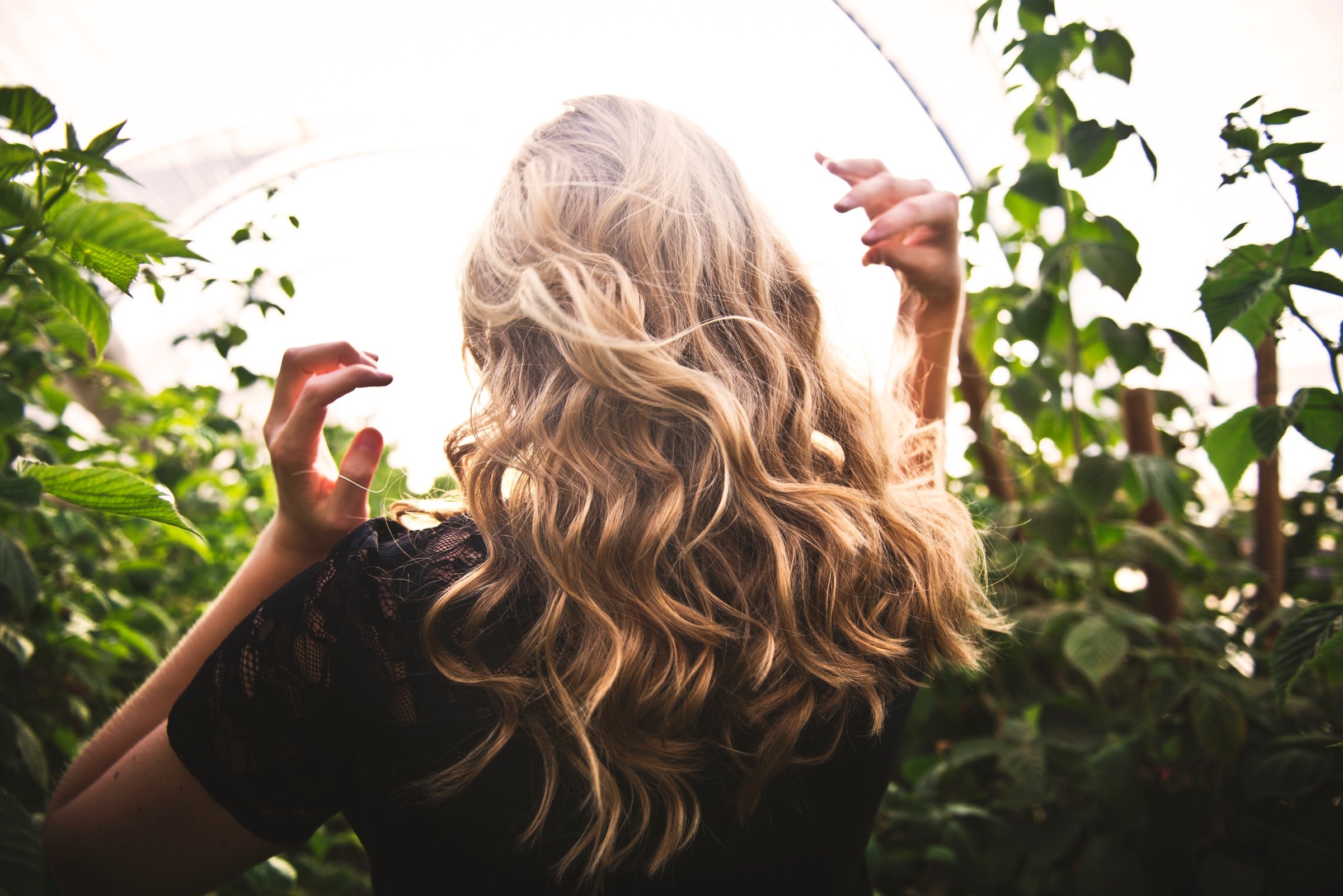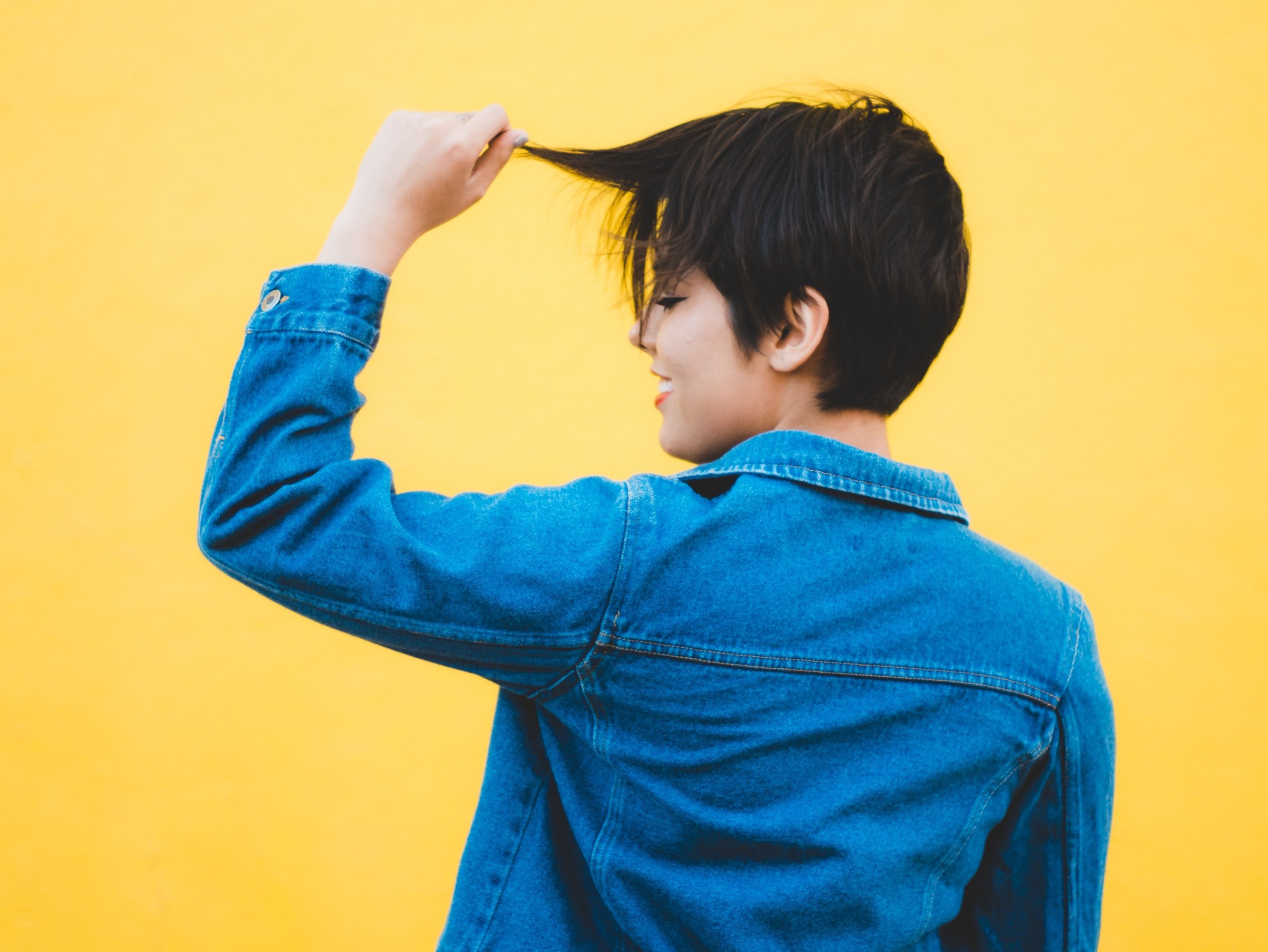How to do a messy bun: lovely US hair stylist Alexsis Mae reveals her 1 minute messy bun trick.
Are you a fan of messy buns? What’s your favourite easy go-to hairstyle?
How to do a fast messy bun with Alexsis Mae.
34 South ParadE, Summertown, Oxford, OX2 7JN
Are you a fan of messy buns? What’s your favourite easy go-to hairstyle?
How to do a fast messy bun with Alexsis Mae.

Photo by Yoann Boyer on Unsplash
Not sure whether to book in a cut or colour before or after your holiday? We’ve got the stylist-approved answer: do it before!
Freshly-trimmed locks will ensure the hair is in the best condition to handle the heat, while newly dyed hair will look incredible in holiday photos.
Our hair needs UV protection too, so to shield your strands from the damaging effects of the sun by packing a protective hair spray or cream.
Holidays are the time to go a bit more natural, so hold back on using heated styling tools or hairdryers to give your hair a break.
And don't forget to book your next appointment ready for when you get home, too.3 easy ways to prepare your hair for summer.

Want to know how to make your hair look good all the time? Short of coming to see us every day for a haircut or blow-dry, we have these tricks you can try at home to keep your locks looking lovely.





Emma says: “You can’t repair split ends with any product or treatment, but you can prevent them. Trimming your hair regularly will keep your hair free of split ends.
“You can also reduce damage by avoiding drying your hair with a towel, as this can cause breakages. Instead of rubbing your head with a towel, apply pressure to gently squeeze out any excess water.”
Emma says: “Applying heat to hair can help straighten it, but the downside is that it dries it out. So the answer is to invest in a good hydrating treatment.
“Also let your hair dry naturally, but if you are using a hairdryer, avoid touching the hair with the nozzle as direct heat can cause frizziness. Instead, position it just above the hair and brush.”
Emma says: “We recommend that you get a trim or cut every 6 weeks, more often if you have a bob or shorter style to keep the shape.”
Emma says: “It depends on your hair type, but frequent washing can strip the hair of its natural oils. If you have dry hair, shampoo a maximum of two times a week, oily hair may need washing every day on the other hand. Normal hair should be washed once or twice a week.”

Photo by Daniel Apodaca on Unsplash
Yes, it’s obvious, but it’s also true. You may have been growing your hair for years, but if you hate your new look, you can just grow it back. That’s the beauty of hair.

There’s something really empowering and energising about having a dramatic new look. Not only will you feel good, you’ll probably inspire loads of your friends to go for the chop.
Let’s face it, a global pandemic and multiple lockdowns have meant that life has been pretty boring of late. Spice up your life with a new haircut to feel like a new you.
Pushing yourself out of your comfort zone is really good for your mental health. It makes you feel proud, empowered and more willing to try new things. Try it and see what else you want to do next!
A fresh haircut means you’ve lost any split ends and damaged hair meaning you look as good as you feel.

Photo by Ali Pazani on Unsplash
Just like hydrating yourself with a glass of water, a hair mask puts moisture back into the hair giving it a new lease of life. It also helps weakened hair follicles to regain strength and elasticity, helping to avoid further damage.
Cooler temperatures can leave any hair type frizzy and fluffy, and a good hair serum is the fastest way to restore order.
The best hair serums will work to smooth frizz while also adding shine, making your hair look as healthy as can be. What’s more, today’s best options come with a whole host of added benefits, from colour-protecting ingredients to nourishing actives and deep-hydrating extracts.
Just like the skin on your face, your scalp can become dry and sensitive when it is exposed to the cold and central heating. Like your skin, you should treat your scalp to some extra TLC in the winter, using products that specifically address your issues.
For instance, applying a weekly soothing scalp mask in the winter is a great way to calm and moisturise your scalp. Daily hydrating scalp toners can also be very beneficial – a healthy scalp is key to hair growth.

Photo by averie woodard on Unsplash
FALSE: In a word: no! Let us explain why. The way you treat the hair shafts doesn’t provide any sort of damage or affect your roots. This is because hair shafts are basically made up of dead tissues, so there isn’t any metabolism going on inside them. No matter how you treat these hair shafts, it would never affect the living tissue. Most of the metabolic activity related to hair loss happens inside the human body, which is called the hair follicle.
FALSE: There is no solid evidence that cutting hair short will cause it to thin. In fact, frequent trims can make thinning hair appear fuller because it removes older hair and encourages growth. The hair looks thicker, because it’s healthy, new hair, but it’s not actually thicker. That’s just part of the life cycle of the hair follicle.

Photo by Rachel Coyne on Unsplash
TRUE: When your scalp produces too much grease and you don’t get rid of it, you may find that more of your hair falls out. This is because sebum (oil) makes your hair ‘dirty’ and can obstruct the follicle. Give some attention to your scalp when hair washing and see if you notice sebum and dirt building up. Opt for gentle products that suit your hair type.
“Anxiety and stress can affect hair loss”
TRUE: When you notice that a lot of your hair is falling out, you may worry even more, contributing to a cycle of loss and feelings of worry and stress. Remember that it’s normal to lose between 50 and 100 hairs a day, so hair loss is normal.

Photo by Matthew Tkocz on Unsplash
FALSE: Not only is this not true, it’s actually completely the opposite! If your hair feels greasy every day, it’s best to wash it to stop excess sebum blocking your follicles. Hair that falls out as you wash was ready to fall out anyway. This loss has nothing to do with your showering habits! While washing won’t make your hair fall out, make sure that you always use products that don’t damage your scalp or irritate it.
FALSE: In line with the previous myth, your hair doesn’t fall out more if you brush it when it’s wet. Hair is more elastic when it’s wet, and it also has a greater tendency to split, which means that you feel as though more is falling out, whereas in fact it’s just broken. If your hair is in the process of falling out, brushing gathers up hair that is about to shed anyway: it doesn’t actually cause hair loss.

Photo by Audrey Fretz on Unsplash

Photo by Tamara Bellis on Unsplash
We all know that the cold, dry air and harsh winds can strip our hair of moisture and leaving it looking dull and lifeless.

Photo by Martin Reisch on Unsplash
Static can be a big problem in winter too particularly after wearing a woolly hat, or if you spend a lot of time in rooms with the central heating on.
This is basically because the hair starts to pick up a static charge whenever it dries out - under normal circumstances this static charge would be absorbed by water molecules in the air, but dry winter air means there is nowhere for this moisture to go. And that means FRIZZ!
So if you want to know how do I look after my hair in winter, here are our top three tips to try today:
Give your hair a lovely hydrating shampoo, use a hair oil treatment or deep conditioning mask to lock in that moisture and stop hair becoming brittle.

Photo by freestocks on Unsplash
As well as the hair follicles the scalp is covered in a ton of microscopic sebaceous glands (responsible for producing the healthy hair sebum oils that keep the hair nourished).
When the scalp gets dry or irritated, these glands stop working properly and your body’s supply of sebum dries up - so the hair is stripped of its natural protective coating, and exposed to the cold winter air - this is what makes it brittle or dry in the colder months.
To counteract this, look out for specialist shampoos and treatments designed to nourish the scalp. Most of these products have a combo of peptides, proteins and plant extracts to maintain the balance of natural oil needed for a healthy scalp.
Regular trims mean that the split ends, and any damaged dry or old hairs are left on the salon floor. We recommend getting a trim every 4-6 weeks, more if you have a shorter style you want to keep in check. Click here or the button below to book your next haircut.

Photo by Tamara Bellis on Unsplash